12 Jyotirlingas You Need to Visit at Least Once in Your Life
Mandvi Singh | May 23, 2025, 15:45 IST
The article introduces the concept of the 12 Jyotirlingas, their historical and mythological importance, and the reasons why visiting these sacred shrines is crucial for spiritual growth. Each Jyotirlinga is described with its corresponding mythological story, providing emotional and religious depth. The piece concludes by emphasizing the transformative journey these sacred places represent.
The concept of the Jyotirlingas is one of the most profound and spiritual aspects of Hinduism, deeply ingrained in Indian mythology and religious consciousness. These sacred shrines represent the various manifestations of Lord Shiva, who, in Hindu belief, is the ultimate creator, protector, and destroyer of the universe. The word "Jyotirlinga" translates to "pillar of light," symbolizing the infinite, all-encompassing power of Lord Shiva that transcends the physical realm. There are 12 sacred Jyotirlingas scattered across India, each linked to divine mythology and offering a unique experience of spiritual elevation.
This journey to the 12 Jyotirlingas is not just a pilgrimage; it is a quest for self-realization, a transformative experience that leads to a deeper understanding of one’s own existence and the universe. Each temple has its own mythological tale, its unique significance, and the vibrational energy that binds its devotees to Lord Shiva’s divine presence.
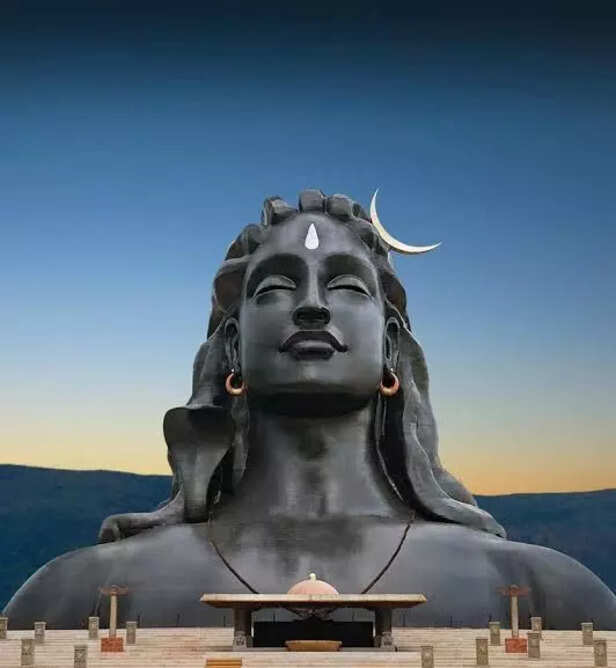
So, if you're looking for a spiritual awakening, here’s a guide to the 12 Jyotirlingas you need to visit at least once in your life
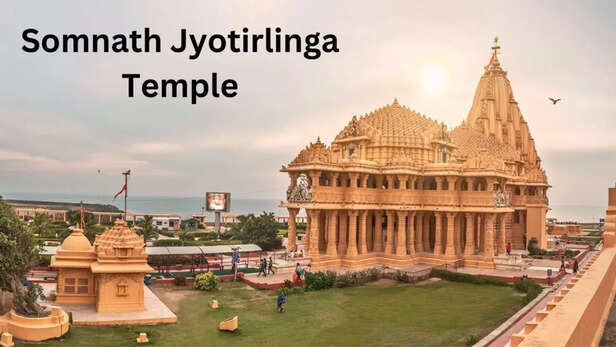
- Mythology : The Somnath Temple is not just one of the 12 Jyotirlingas, but it also carries immense historical and cultural significance. According to legend, the moon god, Som, prayed to Lord Shiva to rid himself of a curse. Pleased with Som's devotion, Shiva appeared here and granted him relief. Thus, the Somnath Jyotirlinga is associated with purity, strength, and liberation from negativity.
- Why Visit : Somnath stands as a symbol of resilience and rebirth, having been destroyed and rebuilt several times throughout history. Visiting this temple allows you to connect with the divine force that represents overcoming obstacles, both external and internal.
- Mythology : Mallikarjuna, another form of Lord Shiva, is closely associated with the legend of the two powerful demons, Shumbha and Nishumbha, who were defeated by Lord Shiva. The temple is also related to the myth of Lord Shiva and Goddess Parvati's eternal union.
- Why Visit : Srisailam is known for its tranquil environment nestled in the Nallamala hills, which provides a perfect space for reflection and devotion. A visit here reconnects you with the primordial forces of creation and destruction.
- Mythology : This Jyotirlinga represents the supreme power of Lord Shiva, who is believed to have defeated the demon Dushana and his army. The Mahakal form of Shiva is revered for its mystical ability to transcend time and space.
- Why Visit : Ujjain is one of the oldest cities in India, and a visit to Mahakaleshwar is an opportunity to experience the timeless power of Lord Shiva. The temple’s architecture and spiritual ambiance are designed to invoke feelings of devotion, time transcendence, and divine justice.
- Mythology : The Omkareshwar temple is located on an island shaped like the sacred 'Om' symbol. It is believed that King Mandhata’s penance led Lord Shiva to appear in the form of a Jyotirlinga to bless him.
- Why Visit : A visit to Omkareshwar offers an unparalleled chance to witness nature’s beauty and the divine. The peaceful atmosphere of the temple and its location in the Narmada River make it a sanctuary for inner peace and connection to higher realms.
- Mythology : The Kedarnath temple is among the most sacred pilgrimage sites for Hindus. It is believed that Lord Shiva appeared here in the form of a bull to bless the Pandavas, who sought his forgiveness for their role in the Kurukshetra war.
- Why Visit : The temple is perched amidst the snow-covered peaks of the Himalayas, offering not only spiritual awakening but a rejuvenating experience for the soul. Kedarnath is the embodiment of the divine presence in the toughest of terrains, making it a powerful pilgrimage.
- Mythology : This temple is associated with the demon Bhima, who was destroyed by Lord Shiva. As a result, the Bhimashankar temple stands as a symbol of strength, power, and the removal of evil forces.
- Why Visit : The lush green landscapes and the serene atmosphere make Bhimashankar a favorite among devotees who seek strength and peace. Visiting Bhimashankar is an opportunity to invoke divine blessings to overcome personal struggles.
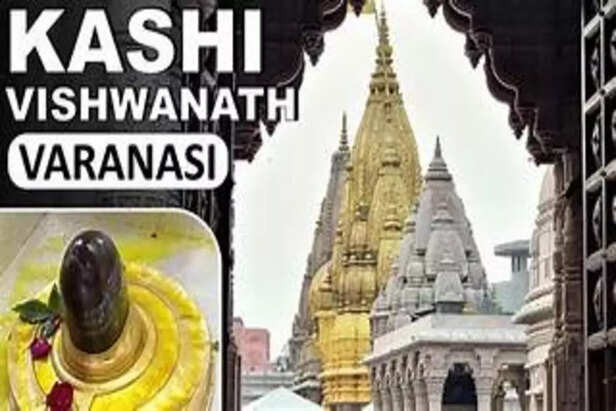
- Mythology : Kashi Vishwanath is one of the most renowned Jyotirlingas, located in the holy city of Varanasi. Lord Shiva himself is believed to have resided here, making the temple a gateway to salvation and moksha.
- Why Visit : Varanasi is the city of eternal life, and the Kashi Vishwanath Temple is the heart of this ancient city. The vibrancy, devotion, and transcendental energy here connect you directly to the universe’s divine rhythm.
- Mythology : Trimbakeshwar is known for its three faces, each representing Lord Brahma, Lord Vishnu, and Lord Shiva. This temple is deeply linked to the origin of the sacred Godavari River and holds a special place in Hindu rituals.
- Why Visit : Trimbakeshwar is a place of intense spiritual energy, offering devotees a sense of unity between creation, preservation, and destruction. It is a temple where time itself seems to dissolve, and you connect with the eternal forces of the universe.
- Mythology : Vaidyanath is believed to be the healer of all ailments, where Lord Shiva cured his devotee, Ravana, of his suffering. The temple stands as a powerful symbol of divine healing and restoration.
- Why Visit : A visit to Vaidyanath is considered a blessing for those suffering from health-related issues. The temple is believed to have a curative power, providing both physical and spiritual healing.
- Mythology : Nageshwar is associated with the legend of the serpent king, Kaliya, who was subdued by Lord Krishna with the help of Lord Shiva. This temple is a representation of Shiva as a destroyer of evil forces.
- Why Visit : Nageshwar’s proximity to the coast of Dwarka adds a unique aura to the visit, allowing you to experience the divine energy while witnessing the beauty of the sea. This temple offers protection from negativity and evil forces.
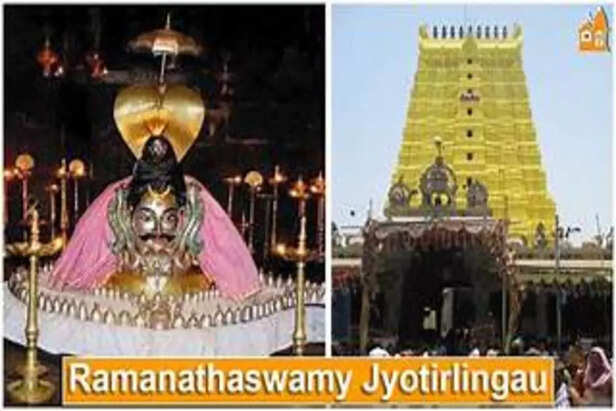
- Mythology : The Ramanathaswamy temple is where Lord Rama, after defeating Ravana, worshipped Lord Shiva to absolve himself of the sin of killing a Brahmin.
- Why Visit : Rameswaram is a place of immense historical and spiritual significance. It offers a deep connection to the legends of the Ramayana and is a perfect pilgrimage for those seeking redemption and peace.
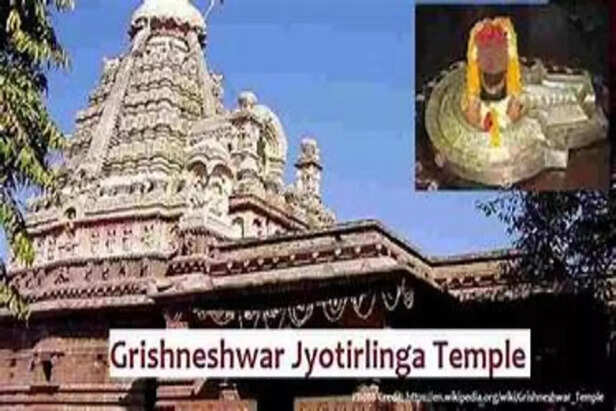
- Mythology : Grishneshwar Jyotirlinga Temple, referred to as the Grishneshwar temple in Shiva Purana, is one of the 12 jyotirlinga shrines mentioned in the Shiva Purana. According to Shiv Puran, Grishneshwar is one of the Shiva Jyotirlinga which is situated Ellora, less than a kilometer from Ellora Caves in Maharashtra.
- Why Visit : Grishneshwar represents Lord Shiva's mercy and grace. Devotees visit to seek relief from personal challenges, such as health issues or struggles in relationships.
These 12 Jyotirlingas are not just places of worship, but they are also sacred energies that guide us on a deeper spiritual journey. The mythological stories behind each of them connect us to the timeless truths of existence and remind us of the divine forces shaping the universe. Whether it is the healing power of Vaidyanath, the time-transcending energy of Mahakaleshwar, or the overwhelming force of creation at Omkareshwar, each visit offers a unique experience that strengthens the mind, body, and soul. Embarking on this sacred journey is not merely a pilgrimage but a step closer to discovering the divinity that resides within us all.
Explore the latest trends and tips in Health & Fitness, Travel, Life Hacks, Fashion & Beauty, and Relationships at Times Life!
This journey to the 12 Jyotirlingas is not just a pilgrimage; it is a quest for self-realization, a transformative experience that leads to a deeper understanding of one’s own existence and the universe. Each temple has its own mythological tale, its unique significance, and the vibrational energy that binds its devotees to Lord Shiva’s divine presence.

Mahadev
So, if you're looking for a spiritual awakening, here’s a guide to the 12 Jyotirlingas you need to visit at least once in your life
1. Somnath Jyotirlinga – Prabhas Patan, Gujarat

Somnath Jyotirlinga
- Mythology : The Somnath Temple is not just one of the 12 Jyotirlingas, but it also carries immense historical and cultural significance. According to legend, the moon god, Som, prayed to Lord Shiva to rid himself of a curse. Pleased with Som's devotion, Shiva appeared here and granted him relief. Thus, the Somnath Jyotirlinga is associated with purity, strength, and liberation from negativity.
- Why Visit : Somnath stands as a symbol of resilience and rebirth, having been destroyed and rebuilt several times throughout history. Visiting this temple allows you to connect with the divine force that represents overcoming obstacles, both external and internal.
2. Mallikarjuna Jyotirlinga – Srisailam, Andhra Pradesh
- Why Visit : Srisailam is known for its tranquil environment nestled in the Nallamala hills, which provides a perfect space for reflection and devotion. A visit here reconnects you with the primordial forces of creation and destruction.
3. Mahakaleshwar Jyotirlinga – Ujjain, Madhya Pradesh
- Why Visit : Ujjain is one of the oldest cities in India, and a visit to Mahakaleshwar is an opportunity to experience the timeless power of Lord Shiva. The temple’s architecture and spiritual ambiance are designed to invoke feelings of devotion, time transcendence, and divine justice.
4. Omkareshwar Jyotirlinga – Mandhata Island, Madhya Pradesh
- Mythology : The Omkareshwar temple is located on an island shaped like the sacred 'Om' symbol. It is believed that King Mandhata’s penance led Lord Shiva to appear in the form of a Jyotirlinga to bless him.
- Why Visit : A visit to Omkareshwar offers an unparalleled chance to witness nature’s beauty and the divine. The peaceful atmosphere of the temple and its location in the Narmada River make it a sanctuary for inner peace and connection to higher realms.
5. Kedarnath Jyotirlinga – Kedarnath, Uttarakhand
- Why Visit : The temple is perched amidst the snow-covered peaks of the Himalayas, offering not only spiritual awakening but a rejuvenating experience for the soul. Kedarnath is the embodiment of the divine presence in the toughest of terrains, making it a powerful pilgrimage.
6. Bhimashankar Jyotirlinga – Pune, Maharashtra
- Why Visit : The lush green landscapes and the serene atmosphere make Bhimashankar a favorite among devotees who seek strength and peace. Visiting Bhimashankar is an opportunity to invoke divine blessings to overcome personal struggles.
7. Kashi Vishwanath Jyotirlinga – Varanasi, Uttar Pradesh

kashi
- Mythology : Kashi Vishwanath is one of the most renowned Jyotirlingas, located in the holy city of Varanasi. Lord Shiva himself is believed to have resided here, making the temple a gateway to salvation and moksha.
- Why Visit : Varanasi is the city of eternal life, and the Kashi Vishwanath Temple is the heart of this ancient city. The vibrancy, devotion, and transcendental energy here connect you directly to the universe’s divine rhythm.
8. Trimbakeshwar Jyotirlinga – Trimbak, Maharashtra
- Mythology : Trimbakeshwar is known for its three faces, each representing Lord Brahma, Lord Vishnu, and Lord Shiva. This temple is deeply linked to the origin of the sacred Godavari River and holds a special place in Hindu rituals.
- Why Visit : Trimbakeshwar is a place of intense spiritual energy, offering devotees a sense of unity between creation, preservation, and destruction. It is a temple where time itself seems to dissolve, and you connect with the eternal forces of the universe.
9. Vaidyanath Jyotirlinga – Parli, Maharashtra
- Mythology : Vaidyanath is believed to be the healer of all ailments, where Lord Shiva cured his devotee, Ravana, of his suffering. The temple stands as a powerful symbol of divine healing and restoration.
- Why Visit : A visit to Vaidyanath is considered a blessing for those suffering from health-related issues. The temple is believed to have a curative power, providing both physical and spiritual healing.
10. Nageshwar Jyotirlinga – Dwarka, Gujarat
- Why Visit : Nageshwar’s proximity to the coast of Dwarka adds a unique aura to the visit, allowing you to experience the divine energy while witnessing the beauty of the sea. This temple offers protection from negativity and evil forces.
11. Ramanathaswamy Jyotirlinga – Rameswaram, Tamil Nadu

ramanath
- Mythology : The Ramanathaswamy temple is where Lord Rama, after defeating Ravana, worshipped Lord Shiva to absolve himself of the sin of killing a Brahmin.
- Why Visit : Rameswaram is a place of immense historical and spiritual significance. It offers a deep connection to the legends of the Ramayana and is a perfect pilgrimage for those seeking redemption and peace.
12. Grishneshwar Jyotirlinga – Aurangabad, Maharashtra

grishneshwar
- Mythology : Grishneshwar Jyotirlinga Temple, referred to as the Grishneshwar temple in Shiva Purana, is one of the 12 jyotirlinga shrines mentioned in the Shiva Purana. According to Shiv Puran, Grishneshwar is one of the Shiva Jyotirlinga which is situated Ellora, less than a kilometer from Ellora Caves in Maharashtra.
- Why Visit : Grishneshwar represents Lord Shiva's mercy and grace. Devotees visit to seek relief from personal challenges, such as health issues or struggles in relationships.
These 12 Jyotirlingas are not just places of worship, but they are also sacred energies that guide us on a deeper spiritual journey. The mythological stories behind each of them connect us to the timeless truths of existence and remind us of the divine forces shaping the universe. Whether it is the healing power of Vaidyanath, the time-transcending energy of Mahakaleshwar, or the overwhelming force of creation at Omkareshwar, each visit offers a unique experience that strengthens the mind, body, and soul. Embarking on this sacred journey is not merely a pilgrimage but a step closer to discovering the divinity that resides within us all.
Explore the latest trends and tips in Health & Fitness, Travel, Life Hacks, Fashion & Beauty, and Relationships at Times Life!
Frequently Asked Questions :
- Q1: What are Jyotirlingas in simple words?They are the purest flames of Shiva — living beacons of energy, scattered across India, each telling a unique story of devotion, miracles, and the endless dance of creation.
- Q2: Why are there exactly 12 Jyotirlingas?Because in Shiva’s rhythm, 12 is the number of completion — 12 months, 12 zodiac signs, 12 gateways of cosmic balance. Each Jyotirlinga guards a different doorway of life.
